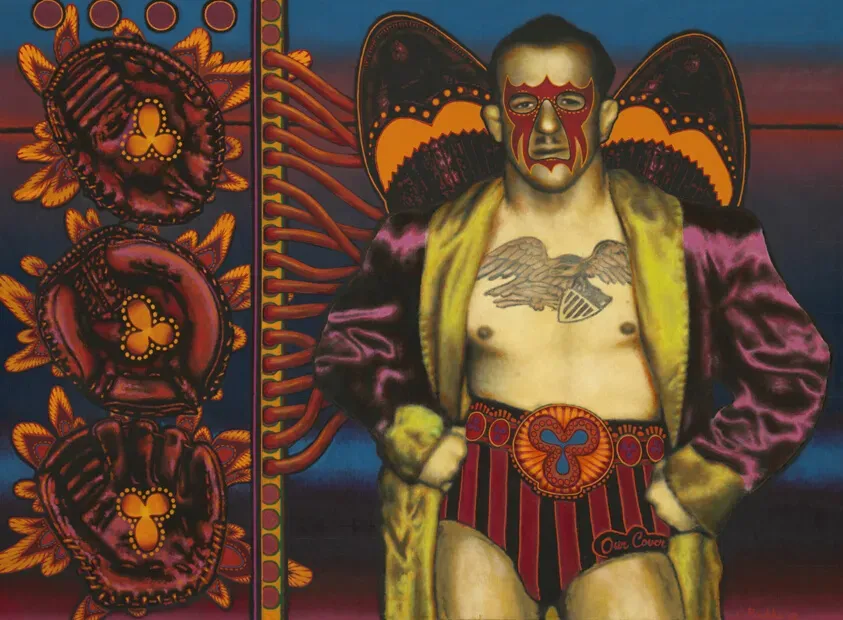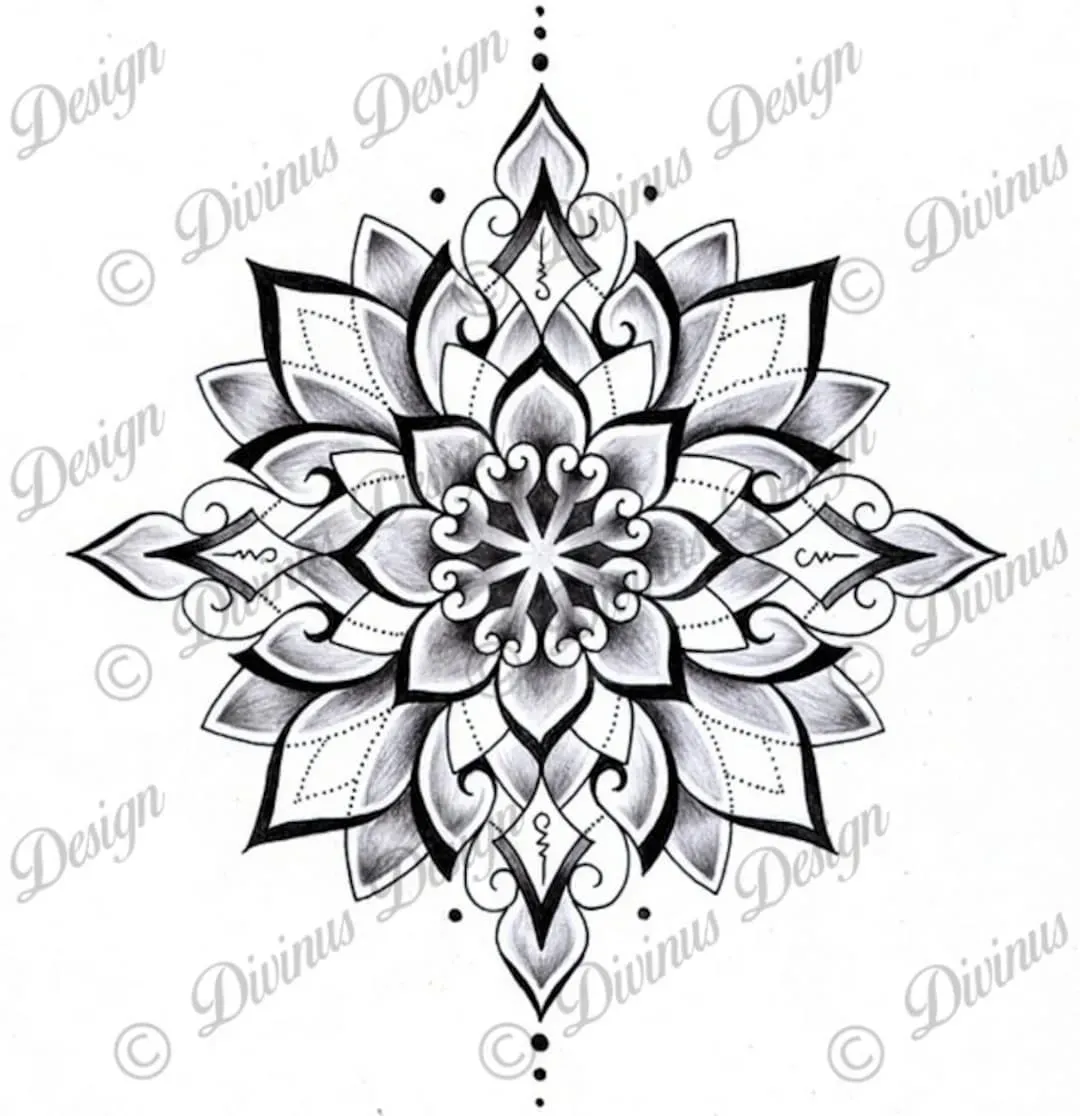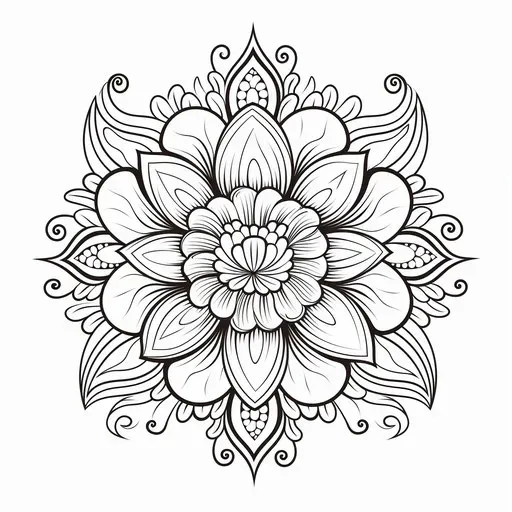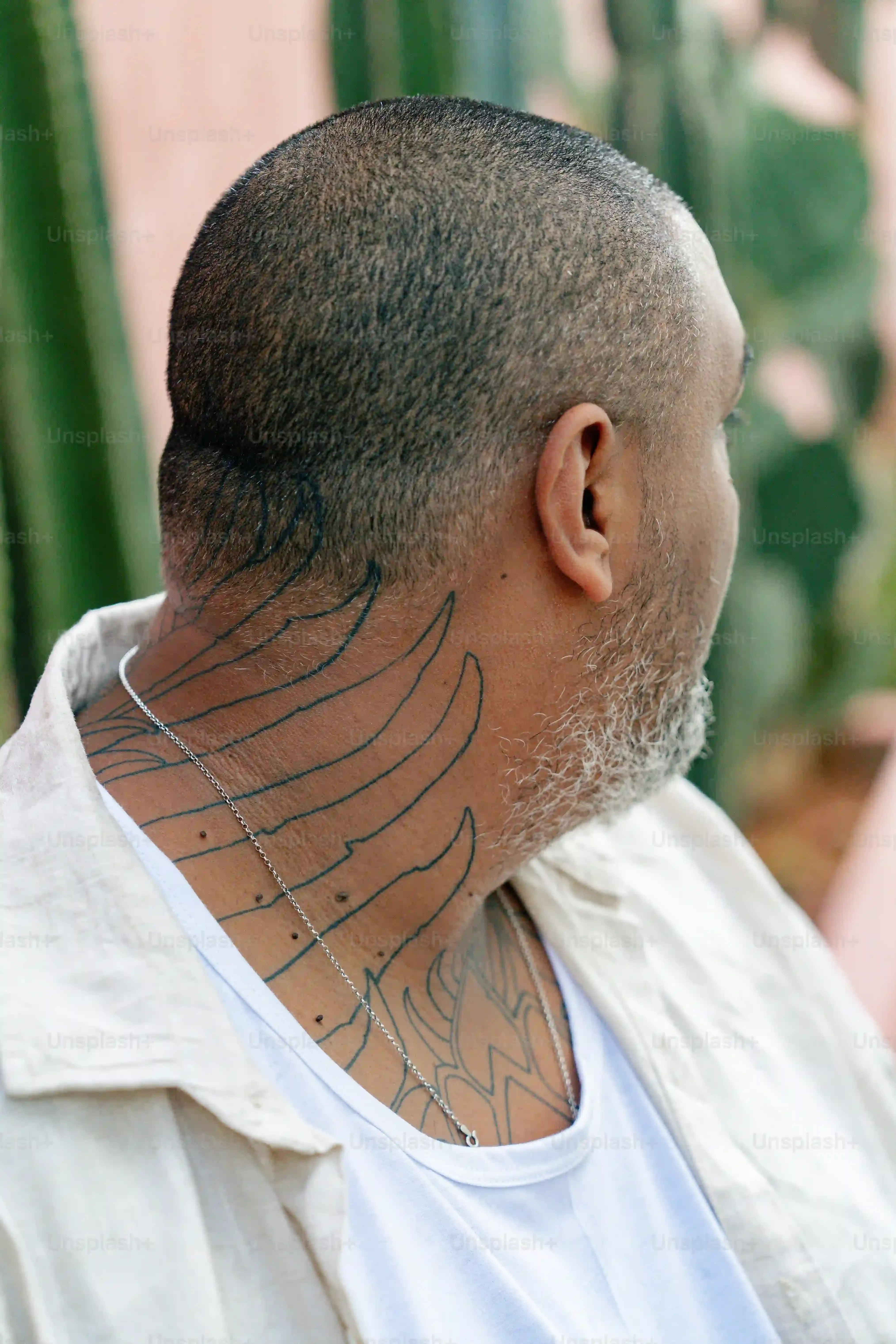Table of Contents
Walk into any tattoo shop, scroll through Instagram, and chances are you'll see them everywhere: intricate, circular patterns drawing the eye inward. We're talking about mandala tattoo designs. They’ve moved far beyond niche spiritual symbols to become a mainstream favorite in body art. But while their aesthetic is undeniable, the real pull for many lies in the layers of meaning these designs hold. It's easy to get lost in the mesmerizing detail, but understanding the history and symbolism behind mandala tattoo designs adds a whole new dimension to the ink you might carry. This isn't just about picking a cool picture; it's about choosing a design that resonates. We'll cut through the noise, exploring what makes these patterns tick, from their ancient roots to modern interpretations, different styles, placement considerations, and what to expect when you decide a mandala is right for your skin.
Why Mandala Tattoo Designs Catch Your Eye
Why Mandala Tattoo Designs Catch Your Eye
Let's be honest, the first thing that grabs you about mandala tattoo designs is the sheer visual punch. They’re intricate, often geometric, and create this hypnotic focal point wherever they land on the body. There’s a symmetry and complexity that just works on an aesthetic level. It’s like looking at a really well-made clock or a complex snowflake – there's order within the chaos, a sense of deliberate construction. This immediate appeal is a major part of Why Mandala Tattoo Designs Catch Your Eye for so many people; they look cool, plain and simple. Before you even dive into the deeper meanings, the pattern itself is a piece of art that draws you in.
Breaking Down Mandala Tattoo Designs: Styles, Meanings, and Spots
Breaking Down Mandala Tattoo Designs: Styles, Meanings, and Spots
Styles of Mandala Tattoo Designs: More Than Just Dots and Lines
so you see the overall circular thing, right? But dive a little deeper, and you find there’s a whole spectrum of styles within mandala tattoo designs. You've got the traditional ones, rooted in Buddhist and Hindu art, often featuring intricate geometric patterns, sometimes with deities or symbols at the center. Then there are the dotwork mandalas, where the design is built up entirely from countless tiny dots, creating a really unique texture and depth. Blackwork mandalas lean into heavy shading and solid black areas for a bolder look. Some artists blend mandalas with other styles, like incorporating floral elements, animal motifs, or even cosmic scenes into the circular structure. It's not a one-size-fits-all deal; the style you pick dramatically changes the feel of the finished piece.
Meaning and Placement: Where Symbolism Meets Skin
Beyond the cool look, the meaning behind mandala tattoo designs is a huge draw. Historically, mandalas represent the universe, wholeness, and the cyclical nature of life. They're used as tools for meditation, helping to focus the mind and represent a spiritual journey. When you put that on your skin, you’re carrying a symbol of balance, harmony, or personal growth. Placement matters, too. A large back piece can feel like a personal universe, a sternum piece sits close to the heart and breath, while a knee mandala? Well, that’s just a bold statement about moving forward. Hand or finger mandalas are constant reminders you see throughout your day. The spot you choose adds another layer to the story the mandala tells, both to you and anyone who sees it.
- Common Mandala Elements:
- Geometric shapes (squares, triangles, circles)
- Floral patterns (lotus is popular)
- Animal symbols (often representing traits)
- Buddhist/Hindu deities or symbols
- Dotwork or intricate line shading
Getting Your Mandala Design Right: Finding Artists and Crafting Concepts
Getting Your Mandala Design Right: Finding Artists and Crafting Concepts
so you're hooked on the idea of a mandala, but where do you even start with Getting Your Mandala Design Right: Finding Artists and Crafting Concepts? This isn't like picking flash art off a shop wall. A killer mandala needs an artist who *gets* geometry, precision, and flow. You're looking for someone with a portfolio full of clean lines, consistent dotwork (if that's your jam), and intricate patterns that don't look like a hot mess up close. Don't just walk into the nearest shop because it's convenient. Stalk artists online, look at healed photos, and see who specializes in this kind of detailed work. A consultation is non-negotiable. Talk through your ideas – the size, the placement, any specific symbols or feelings you want to incorporate. A good artist will take your concept and elevate it, maybe suggesting elements you hadn't even considered, or gently steering you away from something that won't age well on skin. This collaborative phase is crucial; it's where your vision starts to take real shape.
Living with Your Mandala Tattoo Designs: Care and What Comes Next
Living with Your Mandala Tattoo Designs: Care and What Comes Next
so you've got that intricate piece of art on your skin. Living with Your Mandala Tattoo Designs means understanding the ongoing commitment. The first few weeks are crucial; this is when you follow your artist's strict aftercare instructions – gentle washing, specific ointments, keeping it clean and dry. Skip the pool or long baths during this period. But the care doesn't stop once it's healed. The biggest threat to keeping those delicate lines and geometric patterns sharp over the years is sun exposure. UV rays are brutal on tattoo ink, especially fine detail. Make sunscreen your best friend, wear clothing over the tattoo when possible, especially during peak sun hours. Even with diligent care, tattoos age with your skin. Lines can soften slightly, colors might settle. Sometimes, years down the line, a touch-up is a good idea to restore vibrancy and definition, particularly on areas that see a lot of friction or sun.
Wrapping Up Your Mandala Tattoo Designs
So there you have it. Mandala tattoo designs are more than just a trend; they're complex patterns with deep roots and personal potential. Choosing one isn't a snap decision, and it shouldn't be. It involves thinking about the design's flow, where it sits on your body, and what you want it to say, or simply how you want it to look. Finding the right artist matters, maybe even more than the design itself sometimes. Ultimately, your mandala becomes part of your story, a static piece of art on a constantly changing canvas. Treat it right, and it'll stick around, a reminder of the process, the decision, and the day you got inked.